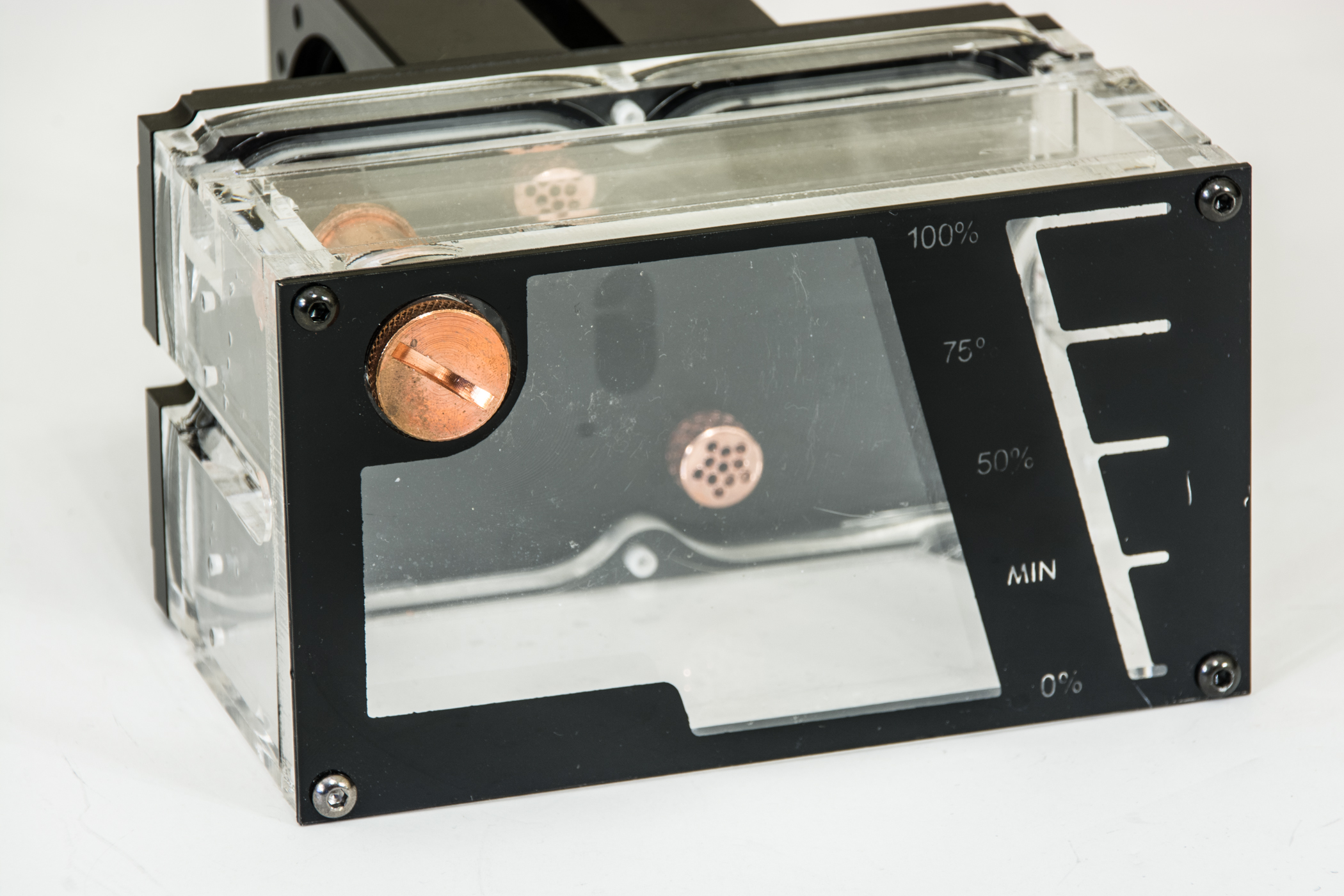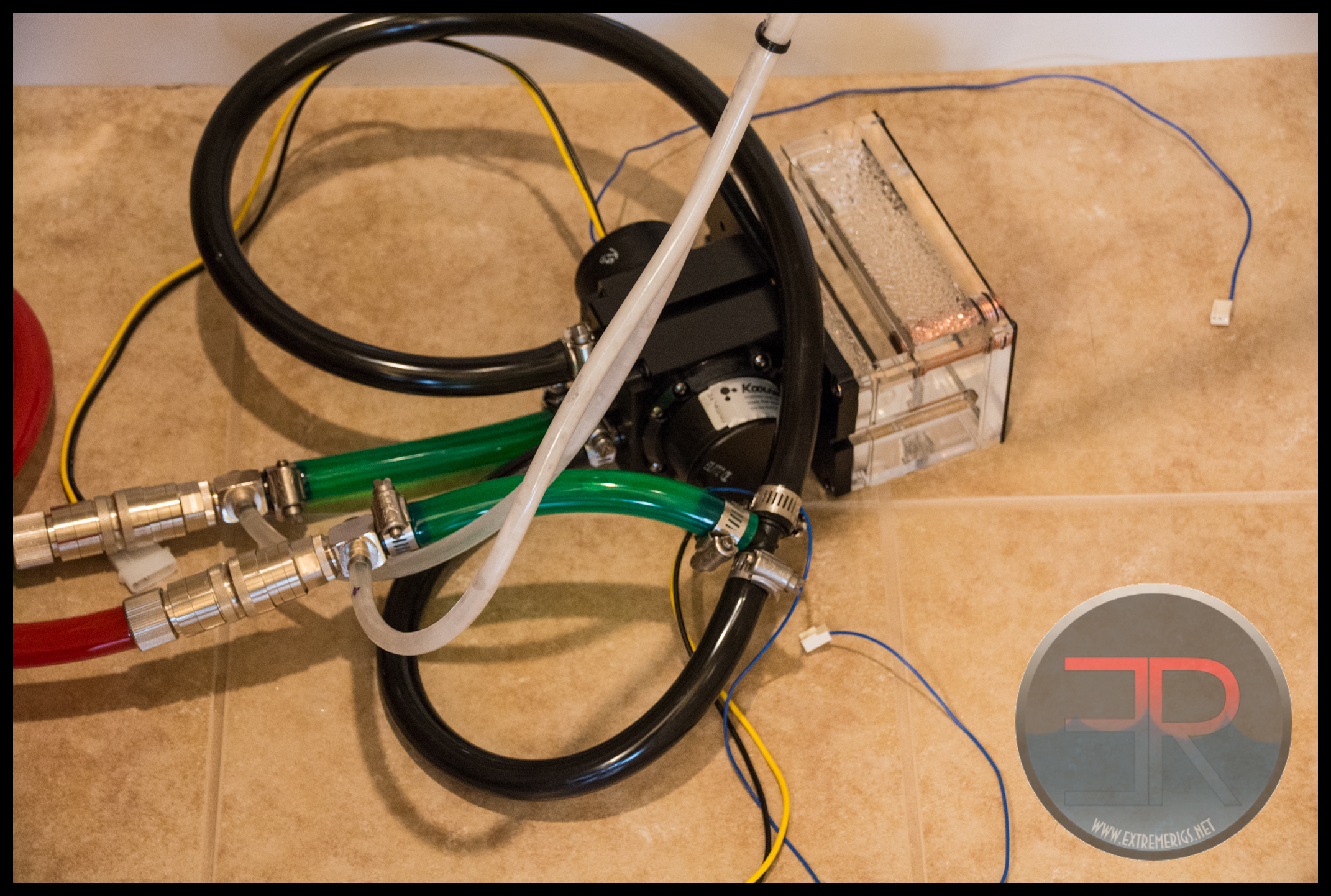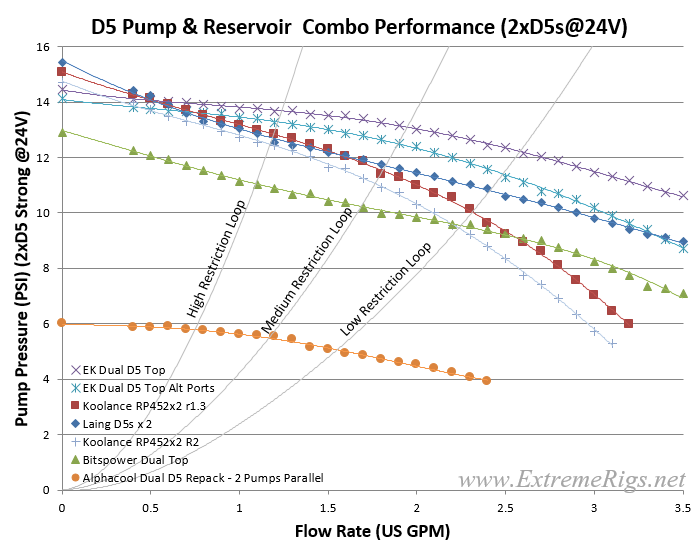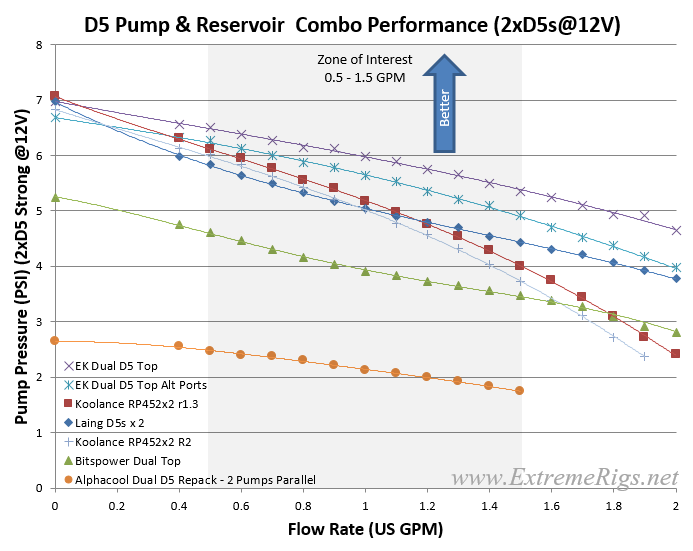For dual pumps you could run two parallel loops, each receiving one pump with a shared reservoir. Due to the symmetrical nature of the design the performance of each setup will be identical to the single pump performance already tested. For dual pump testing then we will test with the setup for one loop. This is where the Alphacool does not shine. Unlike the competition, it does not allow a true series setup where one pump’s output feeds *only* the input of the second pump. The only way to hook up this reservoir is to run both pumps with one loop is to hook them the pumps up in parallel. This is because the pump inlets can not be isolated from the reservoir. Martin showed that series is always better than parallel in this great article.
As the necessary Y connector was not included we had to use a T connector that we had lying around:
This is less than ideal because the two pump output are directed exactly towards each other, in other words they are providing back pressure to each other and this shows in the data:
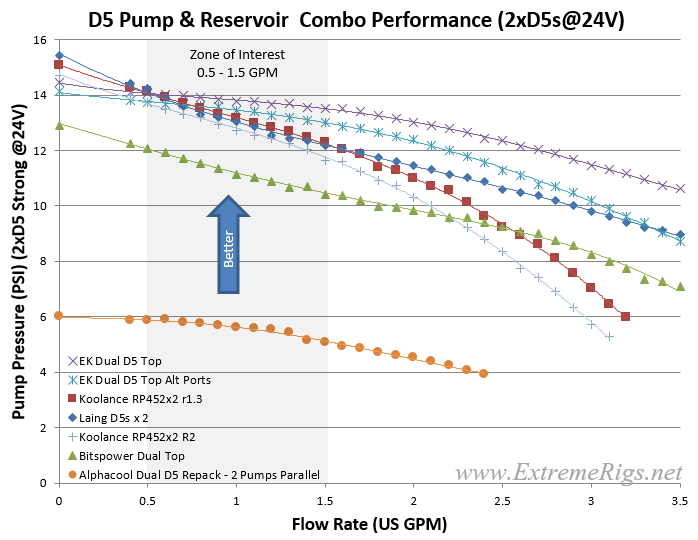 With two D5 strongs at 24V the Alphacool is miles behind the competition. Now instead of being 10-15% behind in flow it is more like 40% behind.
With two D5 strongs at 24V the Alphacool is miles behind the competition. Now instead of being 10-15% behind in flow it is more like 40% behind.
Bear in mind this performance was actually worse than the single pump performance on it’s own! In other words you get less performance by adding on the 2nd pump and using this kind of T adapter.
Lowering the pumps to 12V shows the same behaviour:
Even with a low restriction loop, the Alpahcool can not hit 1GPM with 2xD5 pumps.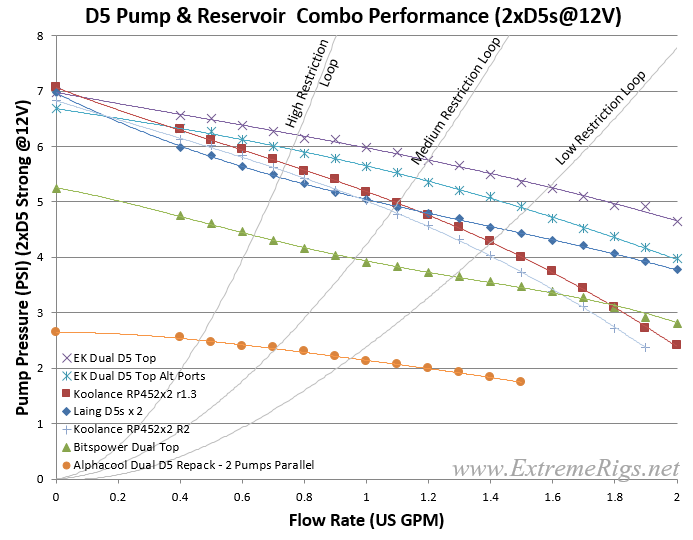
On to the Summary








